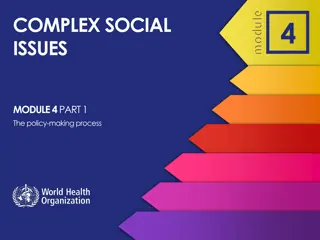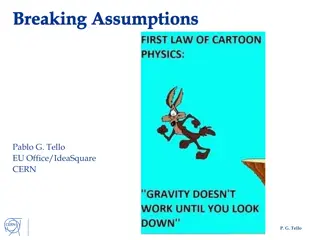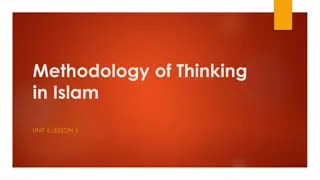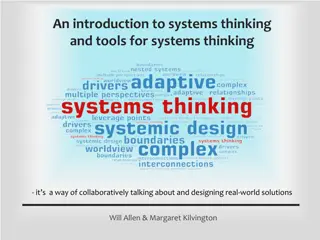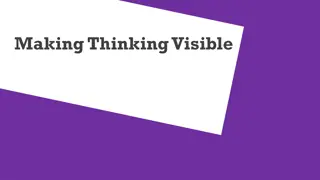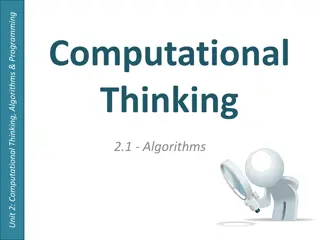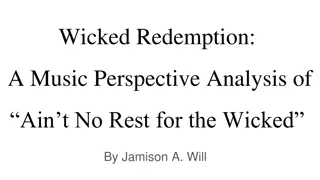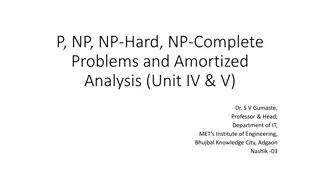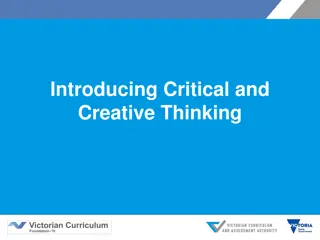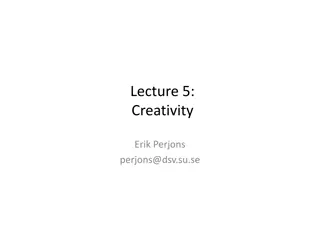Understanding Wicked Problems and Systems Thinking
Change is challenging, especially within complex systems. To address wicked problems effectively, we must embrace systems thinking, which offers a holistic view to tackle interconnected issues. Systems thinking requires shifts in perspective and encourages a deeper understanding of system structures. By adopting a systems perspective, we can identify leverage points for interventions and enhance our problem-solving capabilities.
Download Presentation

Please find below an Image/Link to download the presentation.
The content on the website is provided AS IS for your information and personal use only. It may not be sold, licensed, or shared on other websites without obtaining consent from the author. Download presentation by click this link. If you encounter any issues during the download, it is possible that the publisher has removed the file from their server.
E N D
Presentation Transcript
Systems thinking and research assessment how might we work with wicked problems? Lou Woodley Director Center for Scientific Collaboration and Community Engagement louwoodley@cscce.org @LouWoodley
Why is change so hard? Culture change is often a wicked problem: Requires addressing the whole system Likely involves addressing multipleunderlying structural elements Requires more than one intervention strategies that target a single issue are unlikely to be effective alone Has multiple interconnected elements One size doesn t fit all need to understand the contexts in which we re working Ever feel like you re playing whack-a-mole with a system at equilibrium? DORA / HHMI Research Assessment meeting October 2019
Where does systems thinking come in? Systems Thinking is an approach that encourages us to a take a more holistic or systemic view of how different factors relate to one another within a whole. Encourages us to move away from a focus on individual events or simplistic cause and effect scenarios to focus on the bigger picture Allows us to see multiple components in relationship at once Can indicate inputs we may have missed May make it easier to understand delays or escalations - in the system Can suggest points of leverage for interventions DORA / HHMI Research Assessment meeting October 2019
How do we adopt a systems perspective? Three shifts are required to get to a systems perspective: BIG PICTURE - Move from focusing only on our part of the system to seeing more of the whole system. PERSONAL RESPONSIBILITY - Move from hoping others will change first to identifying where we have agency to change ourselves. SYSTEMS STRUCTURE - Move from focusing on individual events (fires, crises) to understanding and redesigning the deeper systems structures that cause these events. - Thinking in Systems by Donella Meadows DORA / HHMI Research Assessment meeting October 2019
Two ways to start working with systems thinking 1. Systems archetypes
Systems Archetype: Success to the Successful - rich get richer Success of A Success of B s s s o Tips and Diagnostic Questions Diagnostic Question: Why was the system constructed to have just one winner? Can teams be encouraged to collaborate instead of compete? Allocation to A instead of B R2 R1 Diagnostic Question: Are there incentive structures in place that force competition where an organization desires collaboration? Resources to B Resources to A s o Key S arrows indicates a causal link where change in the first item results in a change in the second in the same direction. O arrows indicates a causal link where a change in the first item results in a change in the second item in the opposite direction R loop a reinforcing feedback loop that amplifies change DORA / HHMI Research Assessment meeting October 2019
Two ways to start working with systems thinking 2. The iceberg model
The Systems Thinking Iceberg Exercise Start at the top of the iceberg, by describing a current challenge that you re encountering Work down the iceberg asking each of the questions in turn to undercover the mental models/values supporting the status quo Events What just happened? Patterns/Trends What s happened over time? Underlying Structures How do the parts relate? What s influenced the trend? Mental Models See also: https://socialinsilico.wordpress.com/2017/11/27/rea ding-for-leading-14-exploring-the-iceberg/ What assumptions and beliefs are keeping the system in place? DORA / HHMI Research Assessment meeting October 2019
Further reading Thinking in Systems Donella Meadows The Fifth Discipline Peter Senge Systems Thinking for Social Change Peter Stroh The Systems Thinker website: https://thesystemsthinker.com



